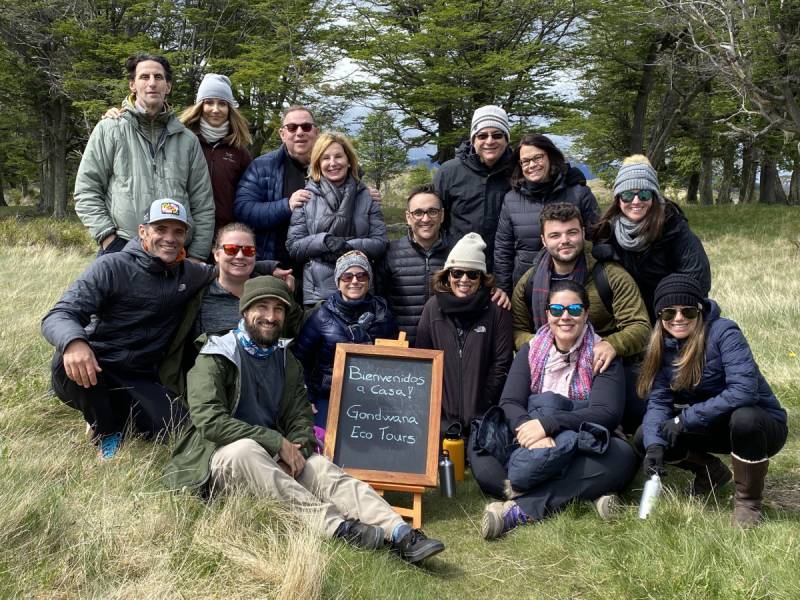A Thrill-Seekers Guide To Trekking Kilimanjaro
Download Travel Details >PRIVATE & SMALL GROUP TOURS TO THE WORLD'S BEST DESTINATIONS
Join Us For A Safari In Tanzania

Planning Your Trip To Kilimanjaro, Tanzania
 Mount Kilimanjaro, or Kili, is often called “the Roof of Africa.” It is the tallest mountain on the continent, and at 19,341 feet, is the tallest free-standing mountain in the world! Kili has been a bucket-list destination for climbers from all over the world since it was first summited more than 125 years ago, attracting experienced climbers and novice hikers alike.
Mount Kilimanjaro, or Kili, is often called “the Roof of Africa.” It is the tallest mountain on the continent, and at 19,341 feet, is the tallest free-standing mountain in the world! Kili has been a bucket-list destination for climbers from all over the world since it was first summited more than 125 years ago, attracting experienced climbers and novice hikers alike.
Even though the mountain is not technical, trekking Kilimanjaro is difficult. Still, the view from Kilimanjaro’s summit is legendary, causing 30,000 people to undertake the trip to Kilimanjaro, Tanzania for a summit attempt each year. What makes hiking this epic mountain so difficult, and is it feasible for a beginner to make it to the summit? Keep reading to learn the answers!
What Makes Climbing Kilimanjaro So Difficult?
There are seven routes to the top of Kilimanjaro, each with varying levels of difficulty. However, none of the routes are technical – Kilimanjaro is a hiking peak. Still, the summit rate for this mountain is roughly 65 percent. What makes trekking Kilimanjaro so difficult? Mostly it’s the elevation. As you near the mountain’s peak, there is about half the oxygen in the air as there is at sea level. This lack of oxygen stresses the body and often causes many hikers to become so sick they cannot continue the climb.
There is no technical climbing associated with the Kilimanjaro climb. However, hikers need to adapt to high-altitude functioning or risk becoming sick. The key to a successful summit of Kilimanjaro is gradual ascent. This decreases the chances of altitude sickness for most hikers, allowing them to reach their ultimate goal.
Five Key Tips For A Successful Summit Experience
If you want to reach the peak of Mount Kilimanjaro, you will need to prepare. Even though the climb is not technical, more than half the people who start the trek up Kili's slopes fail in their summit attempt. Here are five key tips to help you be successful in your climb!
- Physical Fitness: Make sure you're physically fit! Climbing Kilimanjaro is strenuous. Make sure you get regular cardiovascular exercise, like running or hiking, to prepare your body for the climb.
- Acclimatization: A gradual ascent is crucial to help your body acclimatize to the high altitude. Choosing a longer route will give your body more time to adjust and decrease the chance of altitude sickness.
- Proper Gear: Always invest in good quality gear, including proper clothing, footwear, and a reliable backpack. Don't forget essentials like a sleeping bag rated for cold temperatures and trekking poles for stability.
- Hydration and Nutrition: Stay hydrated during your trek by drinking plenty of water throughout the climb. Consume high-energy foods to fuel your body, and snacks like nuts and energy bars for quick energy boosts.
- Mental Preparation: Get your mind prepared for the physical and mental challenges you will face during the climb. Stay positive and focused, and remember to enjoy the journey and the stunning views along the way.
Our final piece of advice is to sign up with a reputable tour operator for a guided tour! Tanzania requires all Kilimanjaro hopefuls to have a guide and porters for the trek, but finding an experienced tour company can make or break your summit attempt. Guides can provide valuable support, expertise, and assistance in case of emergencies. Booking a trek with a reputable company like Gondwana Ecotours is a good idea!

The Best Kilimanjaro Route For Beginners
As we mentioned earlier, there are seven routes to the summit of Kilimanjaro. But what is the best Kilimanjaro route for beginners? When you are planning your trip to Kilimanjaro, Tanzania, you will be required to hire a guide and a minimum of two porters to lead your climb. Your guide will be knowledgeable about the difficulty of each route and can help you pick the one that corresponds to your fitness level in order to guarantee that you see the view from Kilimanjaro’s summit. The three most popular routes for beginners are discussed below.
- The Machame Route – this route is the most popular route up Kilimanjaro. Of the hikers that choose this route, an estimated 50 percent are successful in their attempt for the summit. The route is beautiful, approaching the mountain from the southwest through Tanzanian rainforests that cover Kilimanjaro’s foothills. As you gain elevation the rainforest fades into a low-alpine zone. From there, you will travel along the southern rim of Kilimanjaro, then make a scramble for the summit through Stella Point to Uhuru Peak. The Machame Route is 38 miles long, and is usually climbed in six or seven days. This route offers good opportunities to acclimate to the elevation, which contributes to its high success rate.
- The Marangu Route –this route is the oldest active route on Kilimanjaro and remains one of the most popular with climbers. It is the only route where climbers can sleep in huts along the full route, and is also the fastest – it can be completed in just five days. The Marangu Route is direct and requires less time on the mountain, but you’ll retrace your steps back down the mountain on your descent. The route is beautiful but has fewer opportunities for new vistas than other routes. Although this route is popular, it is not the best Kilimanjaro route for beginners, unless your fitness and endurance are such that you can withstand the more rapid ascent at altitude!
- The Lemosho Route – this route is a newer addition to the Kilimanjaro climber’s options. It was built to extend another route to a lower elevation starting point, allowing more time for climbers to acclimate. The Lemosho route provides a much safer starting point for the climb, especially for beginners. Unsurprisingly, this route may offer the best acclimation option for climbers. The climb takes seven days, which allows plenty of time for a hiker to adjust to altitude. Approaching Kilimanjaro from the west, this route spends two days working through the rainforests along the foothills and provides unique vantage points that no other route offers.
Reaching Kilimanjaro’s Summit In The Clouds
Uhuru Peak is Kilimanjaro’s highest peak. Reaching this peach means that your summit is complete. The final leg of your climb will start at midnight so that you reach the peak at sunrise. This is the most difficult day of climbing that a hiker will encounter while trekking Kilimanjaro because it means they will be on their feet for a minimum of 14 hours that day!
For most hikers, the true challenge of Kilimanjaro is the summit day. No matter which route you choose, they each converge into one of two approaches to the peak. You will have to make the long steep climb in the nighttime hours. However, once you reach Uhuru Peak at sunrise, you’ll be greeted by the view from Kilimanjaro’s summit - gorgeous snow-capped peaks, the sunrise through the clouds, and the natural beauty of Africa extending into the distance.
The Final Descent
Once you reach Uhuru Peak, you will only have a short time to enjoy the view. Elevation sickness has been known to set in quickly, so after you take a photo to commemorate your climb, your group will move down the mountain to a camp where you can rest before climbing back down to the foot of Kilimanjaro. But just think about the memories you will have made on your trip to Kilimanjaro, Tanzania! Climbing Kili is no small feat, and you can be assured that this experience is a life-changing one.

